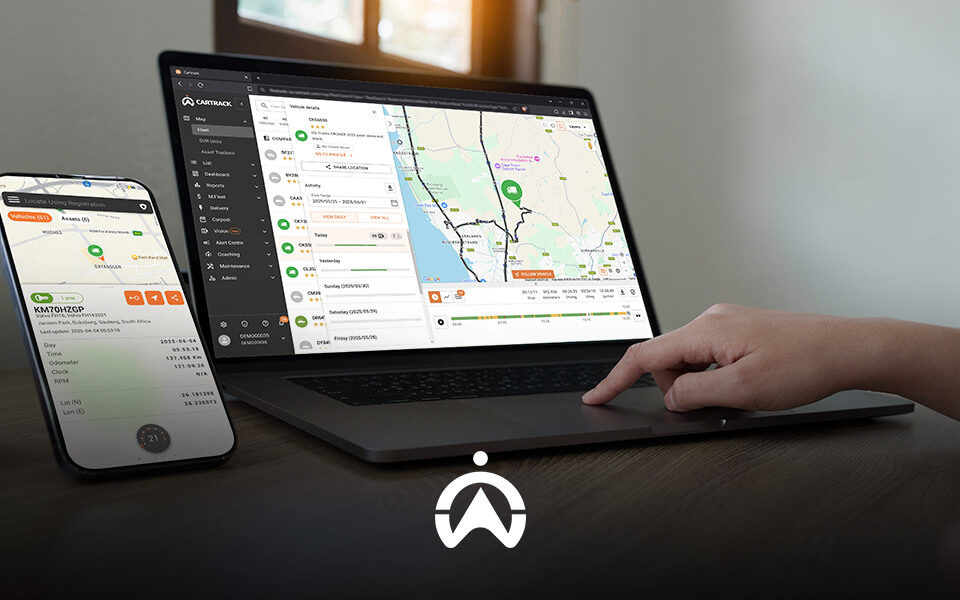Fleet Accident Management: The Real Causes of Accidents and How to Prevent Them
After a vehicle accident occurs, what happens?
At first glance, it’s chaos. Cars have crashed into each other, car parts are scattered, and shattered glass is littered everywhere.
As the minutes tick by, emergency responders start rushing in, paramedics assist the injured drivers, police distance bystanders to a safe distance and the tow trucks arrive to clear away the wreckage.
Imagine a victim involved in the accident is one of your fleet drivers; how does this impact your driver and your business?
What is fleet accident management?
Fleet accident management (FAM) is the structured process of handling fleet vehicle incidents. It covers everything from accident response to promptly managing repairs and insurance claims.
Just like unexpected detours or unforeseen hazards can disrupt your journey, accidents can potentially throw your entire operation off course. This is where fleet accident management (FAM) steps in. It navigates the aftermath of an accident while proactively mitigating future risks.
It’s like having a safety net for your drivers and vehicles, ensuring drivers have a better chance of walking away unharmed and vehicles only have minimal damage.
What causes fleet accidents?
Fleet accidents can result from various factors like driver errors, distractions, road conditions, and weather, to mention a few.
Let’s break these down:
- Driver errorsSpeeding, harsh braking or turning, and fatigued driving have dangerous consequences for the driver and other motorists on the road, often causing accidents.
- DistractionsUsing a phone while driving or taking your eye off the road can contribute to accidents. It just takes a few seconds of distraction to miss a sudden halt of the car in front or a pothole, causing you to swerve and crash into another car.
- Road conditionsUneven pavements, potholes, or slippery surfaces increase accident risks. Imagine a driver navigating through poorly maintained roads, trying to deal with unexpected challenges.
- Weather conditionsRain, snow or fog makes driving more difficult and can negatively impact road visibility. Adapting your speed and distance to safely manoeuvre through challenging weather is recommended during these events.
- Regular vehicle maintenanceFaulty brakes or worn tyres can cause accidents. A well-maintained vehicle navigates roads smoothly, reducing the risk of mechanical issues.
Understanding these factors and implementing safety measures, including fleet accident management (FAM), is vital. It’s about fostering a culture of safety, where drivers use their vehicles responsibly to reduce the risk of accidents and ensure safer journeys.
.png)
Why fleet accident management matters
FAM is generally seen as a holistic approach to safety and efficiency. Without proper safety measures in place to prepare for the chaos of an accident and the events afterwards like delays, financial losses, insurance claims, and even harm to drivers and others, it could become too much to manage, potentially causing a business financial loss, loss of reputation, loss of vehicle operation and even the loss of trust drivers have in the company.
Fleet accident management (FAM) protects against these disruptions and promotes a safer, more efficient way of mitigating accidents.
Benefits of fleet accident management
Fleet accident management (FAM) is important for several reasons. For example, FAM impacts two of the departments that carry the most responsibilities in business: safety and finances. This means that the benefits of fleet accident management are directly linked to crucial business aspects.
Here’s why FAM is more than just an “add-on” and why it should be an integral part of your fleet management strategy:
- Reduced accidents and costsWith a solid fleet accident management program, you can expect fewer accidents, which means lower insurance costs, less vehicle damage, and fewer injuries to your team. Proactive measures like driver training, promoting safer driving habits, and addressing potential hazards in advance all play a role in preventing accidents.
- Driver safety and well-beingPrioritising safety not only keeps drivers safe but also boosts morale and reduces turnover rates. Comprehensive training support from FAM software helps create a safety-focused work culture.
- Compliance and reputation protectionEnsuring compliance with safety standards not only minimises legal risks but also enhances your company’s reputation. By showcasing a commitment to safety through a strong FAM program, you can improve public perception.
- Informed decision-making through dataAnalysing accident data provides valuable insights for targeted interventions and ongoing improvements. Identifying root causes and benchmarking performance can promote informed decisions about driver training and vehicle maintenance, enhancing fleet safety and efficiency.
- Lower downtime and costsPromptly responding to accidents and efficiently recovering vehicles keeps your fleet running smoothly, minimising disruptions and associated costs. With fewer accidents, you also benefit from significant savings through lower insurance premiums.
Essential steps for fleet accident managers
An accident is every fleet manager’s worst nightmare. It’s an unfortunate reality, but one that can significantly impact your fleet’s operations and drivers’ well-being. By being proactive and implementing FAM steps, you can minimise the impact on your drivers and operations.
Here’s how effective fleet accident management navigates the chaos and gets your drivers back on the road:
Step 1: Immediate response
Ensure the safety of everyone involved, secure the accident scene, and promptly respond to the situation.
Step 2: Comprehensive documentation
Collect crucial information like photos, eyewitness accounts, and police reports for insurance claims and legal purposes.
Step 3: Vehicle repair and downtime reduction
Coordinate vehicle repairs, handle towing, obtain repair estimates, and schedule repairs with approved vendors to minimise downtime.
Step 4: Insurance claim management:
Communicate with insurance companies, provide the necessary documentation, and advocate for fair and timely claim resolutions.
Step 5: Accident data analysis and prevention:
Analyse accident data to identify trends, implement preventative measures, and offer training and support to drivers to improve safety awareness and reduce future risks.
Embracing these steps, fleet accident management can help you get your drivers and business out of a sticky situation. Remember, it’s not just about responding – it’s about preventing road accidents and protecting your fleet.
Planning for the future: Fleet accident management solutions
The future of fleet management is about proactive planning, and accident prevention sits at the heart of this approach. Implementing strong accident prevention measures isn’t just about protecting your bottom line; it’s about safeguarding your drivers, the public, and your company’s reputation.
FAM is a multi-faceted approach that touches on several preventative solutions to work smoothly.Let’s unpack some of these:
- Technology-driven solutionsTelematics:Keep tabs on driver behaviour in real time, monitor fatigue levels, and identify other risky behaviours like speeding for valuable insights and future driver coaching.Advanced driver-assistance systems (ADAS):
Equip vehicles with features like lane departure warning, automatic emergency braking, and blind-spot monitoring to help drivers prevent collisions.Artificial intelligence (AI):
Use AI-powered systems to analyse driving patterns, predict potential accidents, and recommend personalised safety interventions.Route optimisation:
Efficient routes minimise unnecessary driving time and exposure to high-risk areas.
- Driver training and skill developmentDefensive driving courses: Arm your drivers with defensive driving skills and safety know-how like hazard perception, skid control, and emergency manoeuvres.Fatigue management programs: Educate drivers on the dangers of fatigued driving and implement policies to encourage rest breaks and healthy sleep habits.
Distracted driving prevention: Implement clear policies and technology-based solutions to combat the dangers of phone use, texting, and other distractions while driving.
- Vehicle maintenance and safetyRegular inspections and preventative maintenance: Ensure all vehicles are in top condition to minimise mechanical failures and breakdowns.Safety technology upgrades: Consider investing in features like automatic lighting, backup cameras, and electronic stability control for added safety.
Ergonomic support: Ensure driver seats and controls are properly adjusted for comfort and to minimise fatigue, especially during longer journeys.
- Smart route planningChoose safe and efficient routes: Avoid high-traffic areas, construction zones, and hazardous weather conditions whenever possible.Plan realistic travel times: Avoid pressuring drivers to exceed speed limits or work unreasonable hours.
Utilise route optimisation software: Optimise routes for efficiency and safety, considering factors like traffic congestion, weather conditions, and road closures.
- Learn from the dataAnalyse accident data: Identify trends and contributing factors to understand where and why accidents occur.Benchmark your performance: Compare your safety metrics with industry standards to identify areas for improvement.
Use data to inform your strategies: Continuously adapt and improve your accident prevention measures based on data-driven insights.
How Cartrack’s safety features can safeguard your drivers, fleet and business
In the realm of fleet safety and accident management, Cartrack emerges as the go-to choice for businesses seeking reliability and efficiency. Cartrack is a global leader in fleet management technology, offering trusted safety solutions that can positively contribute to a fleet’s accident management measures.
Cartrack offers a comprehensive suite of safety features specifically designed to help fleet businesses reduce accidents and enhance driver safety.
- AI-powered camerasAnalyse internal and external surroundings and detect distracted driver behaviours like phone use or drowsiness and unsafe manoeuvres like lane departure or tailgating in real time, accompanied with audio alerts to help quickly prevent accidents.
- Maintenance remindersStay ahead of potential breakdowns with Cartrack’s maintenance reminders. Receive timely notifications for scheduled maintenance tasks, ensuring your vehicles are always in top condition while minimising the risk of mechanical failures.
- Driver behaviour monitoringCartrack’s telematics system tracks driving behaviour in real time, alerting managers to risky driving habits such as speeding, harsh braking, and sudden acceleration.
- Driver scorecardsEmpower your fleet. Use driver scorecards and reports with live-streaming and recorded camera footage to educate drivers on where safer driving practices need to be implemented.
- Crash detectionIn the event of an accident, Cartrack’s crash detection picks up any sudden impact on the vehicle. It sends an alert along with essential information like live location and time of impact, empowering you to take swift action and support your drivers.
With our variety of fleet safety solutions, you can join over 1,9 million subscribers who trust Cartrack to safeguard their drivers wherever they go.
Improve driver and vehicle safety with one platform: Cartrack
From your drivers, vehicles and even the cargo you transport, Cartrack is dedicated to keeping your fleet safe and your business running smoothly.
Take the next step in securing your fleet’s safety and success by partnering with Cartrack today.
.png)
We’ve got all your fleet accidents FAQs answered right here
When an accident happens, there’s no time to ask questions. These answers to popular fleet accident FAQs can inform and prepare you.
As a fleet driver, what should I do after an accident?
Although every accident scene is different, here are a few key actions you should follow if you are not severely injured and can move:
- Stop your vehicle and check for injuries
- Move the vehicle to a safe location, if possible. Switch on the hazard lights and call emergency services if needed
- Notify your fleet manager or supervisor
- Exchange contact information with the affected driver(s)
- Take photos of the accident scene, including vehicle damage and injuries for insurance
- Report the accident to the police within 24 hours
What is fleet incident management?
This is often seen as another term for fleet accident management. Fleet incident management is somewhat different as it focuses more on the broader scope of fleet incidents, which include accidents, equipment malfunctions, security breaches, and even theft.
How can I ensure my drivers are following safety protocols?
Ensuring your drivers follow safety protocols involves implementing clear and comprehensive guidelines:
- Start by giving them thorough training on safe driving practices and emergency procedures
- Keep reinforcing these guidelines through meetings, memos, and ongoing training sessions
- Use technology like telematics and GPS tracking to monitor your driver’s behaviour on the road and if they follow safety rules
- Set up a dedicated system for reporting any safety concerns or incidents
- Finally, encourage, foster, and commit to a culture of safety by rewarding drivers who adhere to safety protocols.
Contact Cartrack today and start using advanced telematics technology to help prevent accidents and keep your fleet safe.



